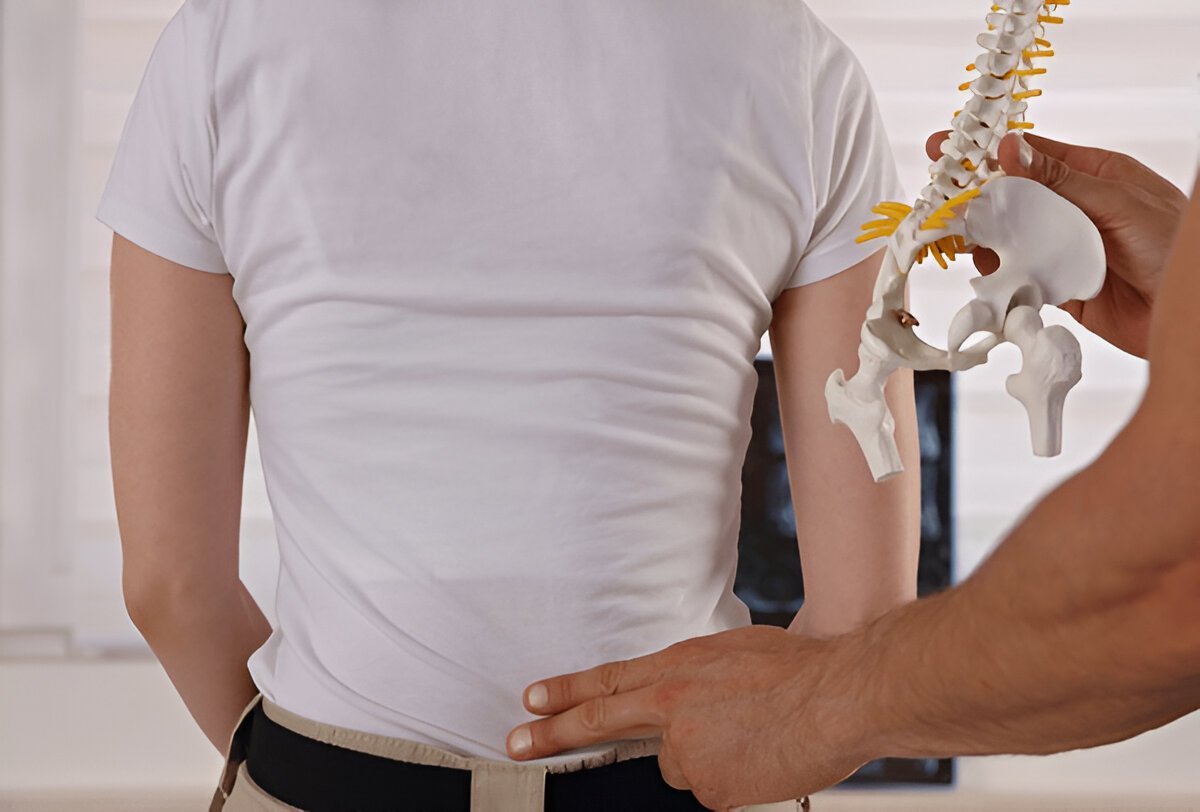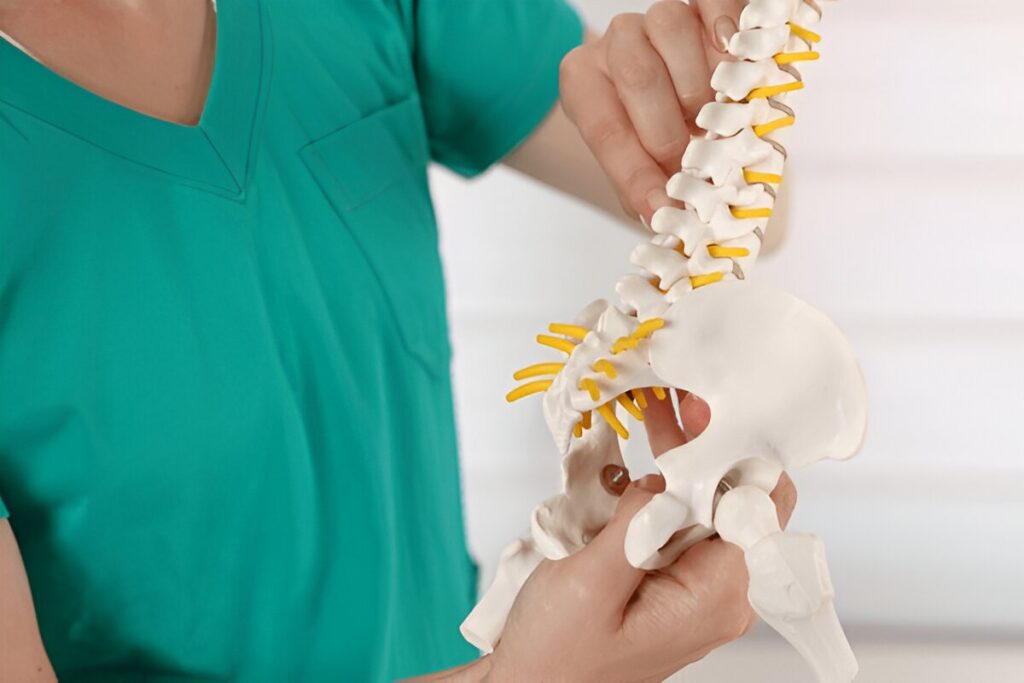
Tailbone Pain: Causes, Symptoms and Proven Relief Options
Experiencing tailbone pain can be a nightmare, one that distracts an individual while sitting. The coccyx is a tiny bone positioned at the extreme end of the spine; if it is hurting, it can be a hindrance to comfort, focus, and sleep during the day.
Here’s the thing: Tailbone pain is not just one of those things that one learns to live with. Whether it is a sharp pain that occurs during sitting, a dull ache following exercise, or an annoying soreness that persists for weeks, being aware of the causes, symptoms, and what has been clinically tested for relief is the first step toward walking again without any pain.
Let’s get down to it.
What Is Really the Tailbone?
The coccyx, often called the tailbone, is a small but functional, triangular bone at the very bottom of your spine. The coccyx provides an anchor for ligaments, muscles, and tendons that facilitate sitting, walking, and maintaining posture. You will come to appreciate the value of a coccyx once you get it injured or irritated.
Most Common Causes of Tailbone Pain
Tailbone pain, commonly called Coccydynia, can be caused by several factors. The most common include:
- Sitting for a lengthy period on a hard surface
Sitting for long hours can strain the coccyx. Think of it as pressing your elbow against the edge of a table for too long; there would eventually be pressure, and then would come pain.
- Injury or trauma
Falls and sports injuries, or anything that causes you to land on your backside, can bruise, fracture, or dislocate the coccyx. Even mild trauma can result in pain that endures for some time.
- Childbirth
For some women, childbirth-related pressures may stretch or injure the coccyx. Tailbone pain during or immediately after pregnancy is more common than is generally expected.
- Poor posture
The tailbone gets irritated when the gluteal muscles drop out of action or when they get overstretched from prolonged slouching or awkward leaning while sitting, placing more stress on the lower back.
- Repetitive strain
Repeated activity and pressure through cycling or rowing will lead to coccyx pain.
- Other conditions
In rare cases, persistent pain in that area can be caused by infection, arthritis, or even tumors.
Symptoms to Look Out For
Tailbone pain vary from one individual to another. While some deem eruptions of agony to be the most appropriate description, others consider a more persistent nagging pain an accurate portrayal. Symptoms include:
- Pain while sitting, especially on hard surfaces
- Discomfort when rising from a sitting position
- Tenderness or swelling at the base of the spine
- Pain on bowel movement or during sexual activity (in severe cases)
- For pregnant women, tailbone pain occurs due to additional weight and pressure.
These signs send a clear message that your coccyx is calling out for care.
How to Treat Tailbone Pain

At best: No treatment is necessary for occasional tailbone pain. On the other hand, the pain may persist for months or even years if there was trauma to the area. Here comes the treatment plan to help, beginning with those that can be done at home:
1. Improve Your Sitting Setup
- Using a cushioned or donut-shaped pillow is helpful to reduce any direct pressure on the coccyx.
- Sitting upright with back support, the feet should be flat on the ground; avoid leaning back excessively.
- Stand and walk around during breaks, every 30 to 45 minutes.
2. Apply Ice or Heat
- The ice pack is to be used within 48 hours following the injury to restrain swelling.
- Warm packs, or heating pads, can be used for tight muscles and to improve blood circulation in the event of pain that lingers.
3. Exercises For Mild Tailbone Pain
Strengthening and stretching of the muscles around the glutes, pelvic floor, and lower back relieve pressure on the coccyx slightly with exercises such as:
- Cat-cow motions to help mobilise the spine
- Glute bridges for stability
- Gentle pelvic tilts for alignment
Movement increases circulation, decreases stiffness, and fosters healing.
4. Lifestyle Change
- Standing or walking should be done as much as possible.
- Wear supportive shoes.
- Keep a healthy weight so as not to apply extra stress to the spine.
5. Professional Physiotherapy
When in-house measures just aren’t working for you, a physiotherapist may be able to help with:
- Manual therapy: Mobilising stiff joints and releasing muscle tension
- Strengthening exercises: Stabilising the pelvis and lower back
- Training postures, so the way you move and sit promotes good health
- Education and home exercise programmes that are specific to you, to avoid further problems
Physiotherapy doesn’t just tackle the pain; it tackles the root causes. Therefore, it is often a more long-term fix.
6. Medical Interventions (For Extreme Cases)
If the pain continues, other options include:
- Local injections to reduce inflammation
- Drugs to control extreme pain
- Surgery (rarely), but always after all other conservative treatments have failed
When to See a Specialist
Tailbone injuries are often minor and heal within a few weeks. But if you’ve been wondering, ” Why does my tailbone hurt for months?” It’s about time you get some help. Persistent pain, swelling, or limits in functioning represent something besides everyday numbness.
This is where physiotherapists and spine specialists enter the scene to guarantee an accurate diagnosis, proper treatment, and ultimately, faster recovery.
Living Without Tailbone Pain
Here’s the bottom line: Tailbone pain is common, but it’s not something you really have to “just deal with.” With the right care, from changing your sitting habits to working with a physiotherapist, you can relieve the pain, restore movement, and get on with living without a constant reminder of the misery.
The team at Rapid Physiocare specializes in the management of coccydynia. We employ contemporary physiotherapy techniques, a personalized care plan, and an empathetic approach to assist patients in healing efficiently and prevent recurrence.
Ready To Find Relief?
Don’t allow a tiny bone to put a big hurdle in your life. Whether your pain is recent or long-lasting, treatment tailored for you makes all the difference.
Book your appointment at Rapid Physiocare today.
Tags : back pain relief, coccydynia, coccyx pain, physiotherapy for tailbone pain, Rapid Physiocare Singapore, Sitting Pain Relief, tailbone pain, tailbone pain causes, tailbone pain relief, tailbone pain treatment singapore


